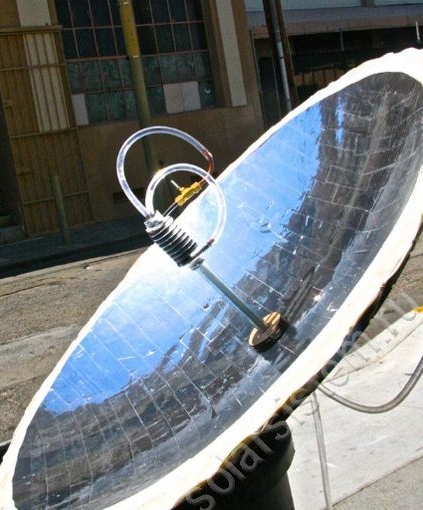
The most popular ways to use solar energy to heat water is to create flat or vacuum solar collectors. However, there are still methods with a rather high coefficient of efficiency that help to use the energy of the sun to heat water. This article will consider one of these methods, namely the creation of a solar concentrator for hot water supply.
To create a water heating system using a solar reflector, the author needed the following materials:
1) parabolic satellite dish
2) mirror film
3) copper tube
4) salt
5) black heat resistant paint
6) mullite crystal fiber
Consider the basics of the system and the stages of creating a solar concentrator.
The main advantage of such a system is its higher productivity: high-quality reflectors focus the high density of sunlight at one point, which allows you to turn water into steam in a matter of seconds.
To demonstrate the visual power of such systems, I recommend that you read the following video material:
As shown in the video, a small solar concentrator can burn wood, melt lead, that is, the temperature that occurs at the point of concentration of sunlight is quite high.
However, this system has a number of disadvantages that you need to know before deciding to build such a system.
In order for the reflector to be constantly turned towards the sun, it is necessary to install special tracking systems that will adjust the reflector relative to the sun throughout the day. These trackers are quite expensive, and consume quite a bit of energy.
The effectiveness of the concentrator is highly dependent on the cleanliness of the reflective surface, so mirrors require keeping them clean.
If these shortcomings do not scare you, then to build a concentrator you will need a parabolic satellite dish, and it is not particularly important whether it is direct-focus or offset model. The main thing is the correct parabola, which will concentrate all the caught rays at one point. In principle, you yourself can even make a semblance of an antenna from sheets of cardboard, but the effectiveness of such a system is very dependent on the quality of the parabola.

After cleaning the surface of the antenna, the author proceeded to pasting it with a mirror film. It is best to use a metallic film with an adhesive layer to create a mirror surface. Pasting the surface with such a film is quite simple according to the principle of self-adhesive wallpaper, but you can also use pieces of mirrors to create a reflective surface on the antenna.
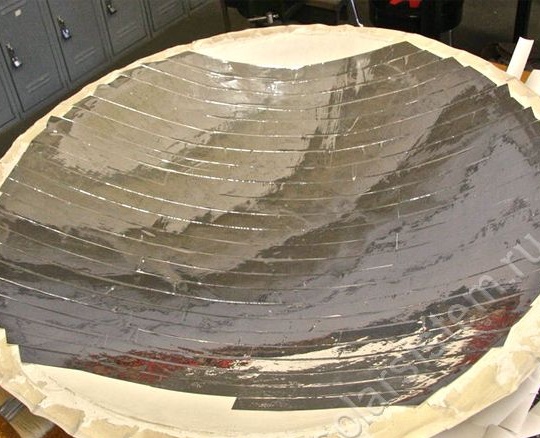
Since the satellite dish itself has a curved shape, it’s not entirely reasonable to try to stick a single piece of film. Therefore, before pasting, the author cut the film into thin strips. Thanks to this approach, it was possible to glue the entire surface of the antenna fairly evenly and quality.
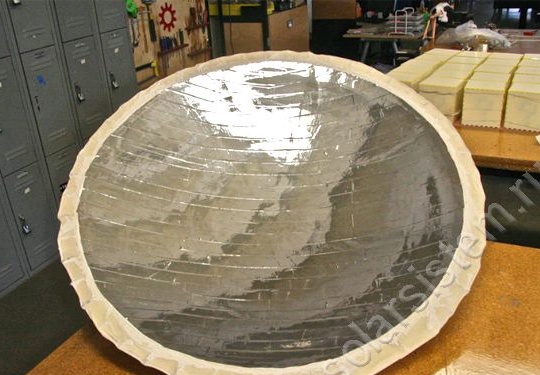
After the antenna acquires a mirror surface, it is necessary to determine the focus point, it will be the place of concentration of reflected sunlight from the surface of the antenna. Usually the focus point at the solar antenna is located just in the area of the converter, but if you built the parabola yourself, then it is easiest to determine the focus point using the experimental method. It is necessary to take a piece of plywood thicker and gradually move it away from the hub until the sunspot on it decreases, as soon as it is minimal this will be the focus point of the sun's rays. The main thing to remember is that the temperature is concentrated in this place, so you need to be careful and wear protective equipment: leather gloves, a welding mask or sunglasses.
Next, you need to make a heat exchanger that will report the temperature to the water. For this, the author used a copper pipe. He rammed the salt into it, and began to wind around the pipe a little more. The salt inside the copper tube is needed so that the pipe does not flatten during winding.
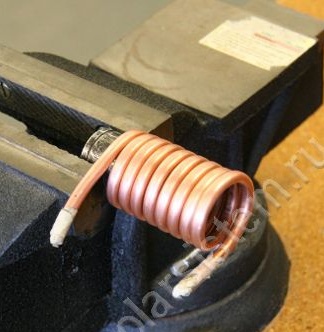
The author notes that in order to use the maximum energy from the sun, the heat exchanger does not hurt to paint black. Since the heat exchanger will experience high temperatures, it is necessary to use heat-resistant paint for painting.
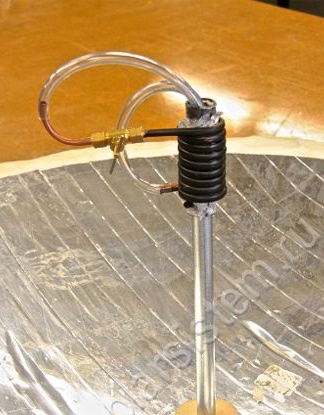
Also, to increase the efficiency, it is necessary to insulate the heat sink so that it does not cool down from the wind.

Below is a diagram of the insulated heat sink:

Use refractory materials to insulate the heat sink, as high temperature will be concentrated in this place. The author of this concentrator used mullite-crystal fiber for this purpose, which is used in gas furnaces and muffle furnaces. Glass should also be tempered so as not to deform from temperature.
The heat sink was made on the principle of water-cooled radiators for computers. It is manufactured according to the spot size of the focus point of the hub.
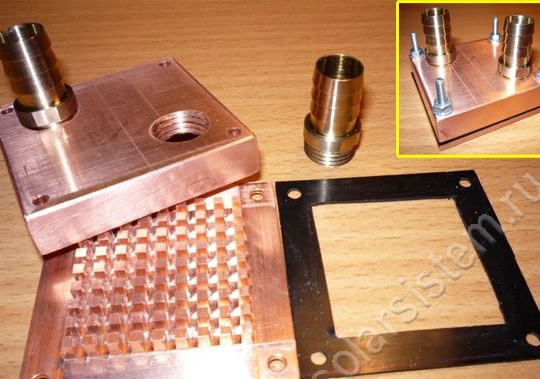
The following is a connection diagram for a solar concentrator:
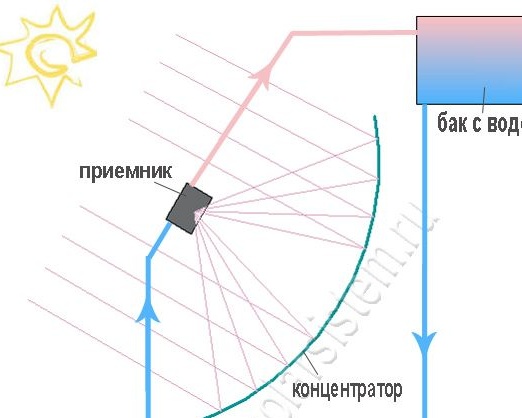
The author also recalls that the tubes and tank must also be insulated in order to increase efficiency.
